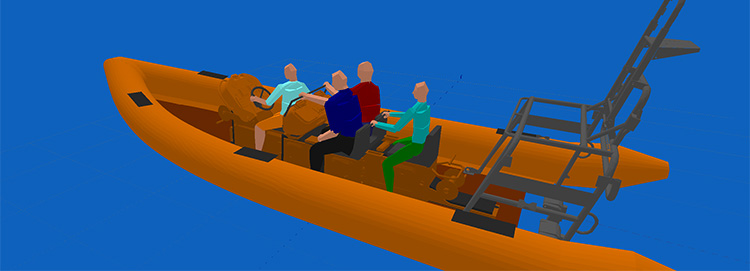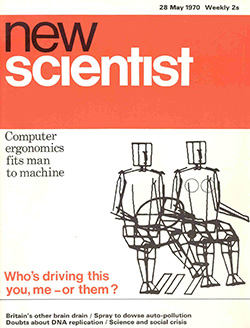Data Import
The common way of obtaining data of a design or workstation to be evaluated is to use data created in another CAD system. SAMMIE can import third-party data through the use of the Wavefront object (.obj) file format. OBJ files are commonly supported by most CAD systems and support both the representation of geometry and the hierarchical relationships of parts. Thus an assembly of a train cab modelled a CAD system such as Solidworks or Creo can be output as an OBJ file and on import to SAMMIE the hierarchical structure of the assembly is maintained.

Data from Solidworks imported into SAMMIE to produce a model of the RNLI A85 RIB
One of the main considerations when importing data into SAMMIE is data resolution or density. Most ergonomics evaluations only require a limited fidelity of data. In addition large complex files can be unwieldy within SAMMIE when combined with multiple human models. Our advice is that only fundamental data should be imported and thus small, inconsequential objects such as fasteners should be excluded from the OBJ file. In addition, OBJ only supports polygonal representations of geometry. Thus curves and surfaces supported by parametric CAD tools are converted to line segments and facets. During this polygonisation process many CAD tools allow a chord height to be specified. This determines the polygon density, with larger values providing a coarse representation of curved surfaces (thus a cylinder could end up looking like a hexagonal prism), and smaller values providing a much smoother representation. The polygon density also has a direct relationship with model data size and thus a balanced approach is recommended.






